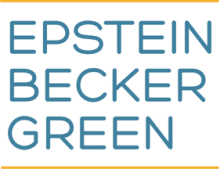California’s Assembly Bill 489 (“AB 489”) signals more than just a tweak to existing healthcare law—it’s a glimpse into how the next generation of regulation may shape the future of AI development and deployment in healthcare.
As large language models (LLMs) and other AI-driven health platforms accelerate in capability and adoption, lawmakers are scrutinizing where technological innovation may result in the unauthorized practice of medicine. The message is clear: the days of operating in a regulatory gray zone are numbered and the regulatory perimeter around healthcare AI is tightening such that states may begin to legislate how AI can present itself to the public, not just what it does in the background.
AI “Impersonation” in the Crosshairs
AB 489 targets AI systems that give patients the impression of interacting with a licensed healthcare professional when no such regulatory oversight exists. This extends to both overt misrepresentations (e.g., a chatbot claiming “I’m Dr. Smith”) as well as to more nuanced cues such as post-nominal letters connoting training, use of professional terminology, and even conversational tone. Legislators appear to consider that those subtle nuances could lead users to believe licensed expertise is directly involved.
It is important to note that California law already prohibits unlicensed individuals from using terms implying medical licensure. AB 489 merely bolsters those rules for the AI-driven era, explicitly covering AI-generated content and automated interactions.
Key Provisions With Industry-Shaping Implications
AB 489 prohibits using any post-nominal letters, phrases, or features in AI systems that would suggest the user is receiving care from a licensed healthcare professional—unless such oversight truly exists.
This raises three immediate compliance fronts for AI developers and deployers:
1. New Enforcement Channels
Critically, state professional licensing boards would gain direct oversight over these violations, adding another compliance checkpoint alongside existing privacy, security, and consumer protection rules. Note that each violation could be treated as a separate offense.
2. Interface Overhauls
User interface (UI) and user experience (UX) teams will need to scrub products of any design elements—terminology, icons, phrasing—that imply licensed care without adequate evidence to support appropriate licensure and oversight.
3. Marketing Reinvention
Positioning AI products as “doctor-level,” “clinician-guided,” or “expert-backed” may become riskier unless AI development actually involves the participation of licensed practitioners.
Part of a Bigger Regulatory Wave
Despite California pioneering with AB 489, this legislation does not arrive in isolation as it is part of a broader push to police AI in healthcare, alongside bills on transparency, algorithmic bias, and patient safety. The bill also dovetails with the state’s strict corporate practice of medicine (“CPOM”) rules, reaffirming that clinical decisions must remain the domain of licensed professionals.
Strategic Playbook for Healthcare AI Innovators
Should AB 489 become law, AI developers may have an opportunity to embrace and use this regulation as a catalyst for trust and market advantage. For example, AI developers may want to consider proactive compliance design that integrates legal review into the early stages of product design and marketing, avoiding costly post-launch rework and retrofitting. AI developers should also consider how to engage licensed practitioners early and often as part of the development and design process in order to support legally compliant marketing representations regarding professional oversight. Further, AI developers should continue to embrace the regulatory push towards transparency and ensure clear disclosures are made about what the AI can and cannot do along with building in explainable decision pathways.
For healthcare AI companies, the challenge is twofold: stay ahead of compliance curves while sustaining the velocity of innovation. Those who succeed will be the ones who embed regulatory readiness into their core strategy. AB 489 further evidences an emerging state-level policy push to ensure AI development and adoption is not driven solely by the fastest innovators, but rather by those that are most trusted.




 />i
/>i

